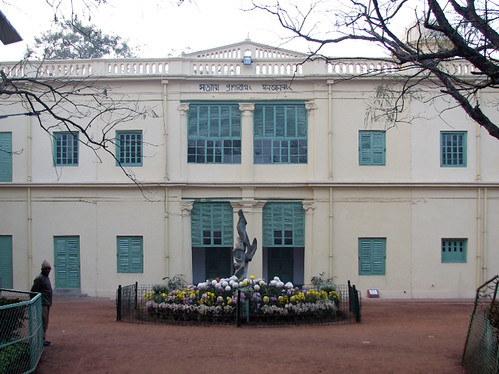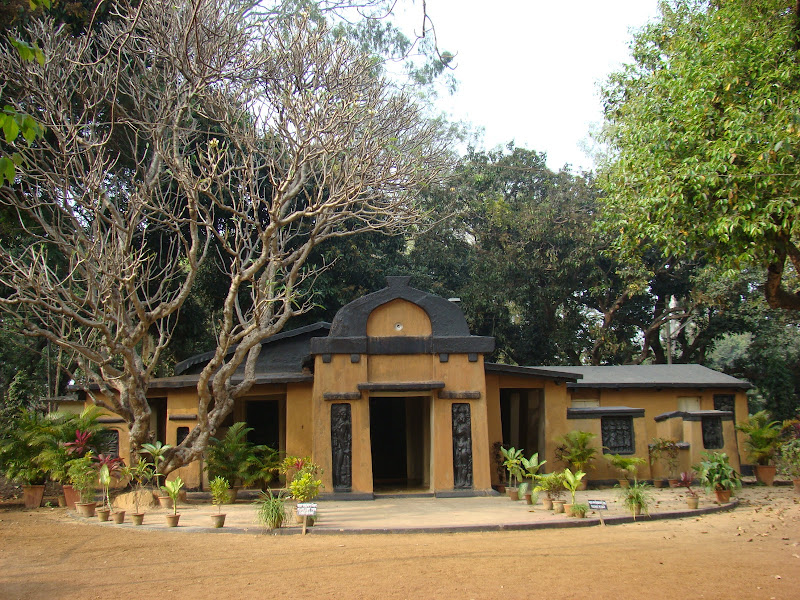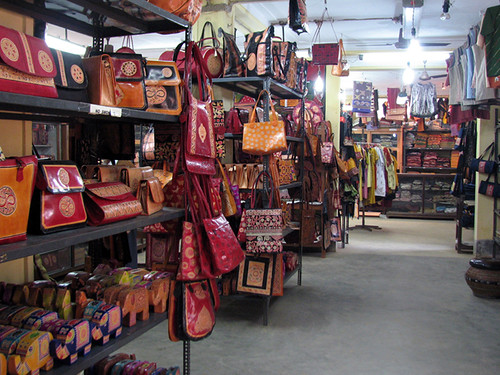Bhubaneswar is the capital city of the Indian state of Odisha. Historically Bhubaneswar has been known by different names such as Toshali, Kalinga Nagari, Mandira Malini Nagari. Bhubaneshwar , the 'city of temples', named after Tribhuvaneswar, 'Lord of Three Worlds', still preserves over 500 of India's finest temples.The city is surrounded by dense canopy of forests, picturesque Chandaka and the Nandankanan; this along with an abundance of greenery and an efficient civic body makes it one of the cleanest and greenest city of India today. The present modern city of Bhubaneswar was established in 1946 which is designed by the world renowned German architect Otto Konigsberger.
How to reach here:
By Air: Biju Patnaik airport at Bhubaneswar is nearly 5 km away from the heart of the city.
By Rail: Bhubaneswar railway station is about 6 km away from the city center. This railhead is well-connected to the metro cities.
Best time to visit: October to March
Languages spoken: Oriya, English, Hindi and Bengali.
Must eat: Pakhala, Dalma, Santula, Kanika.
Famous Restaurants: Golden Bird, Mayfair Lagoon, Teapot, Garam Masala, Hare Krishna.
Places you must visit:
Orissa State Museum is well known and famed to glory its huge collection of manuscripts on palm-leaves. A palm leaf manuscript of 12th century devotional poem Gita Govinda is available in this museum.It exhibits a rich and invaluable collection of archaeological objects, art and craft objects, natural history objects.The museum was established in 1948 and show cases many other items also, like bronze images, traditional and folk musical instruments, coins, copper plates, prehistoric objects, ethnological objects and armory.

_-_Oct_2010.jpg)
_-_Oct_2010.jpg)

Bindu-Sarovara also known as ocean drop tank is believed to have water from every holy water body in the whole of India. The tank is suitably surrounded by many temples.The famous Lingaraj Temple and Ananta Vasudeva temples are placed very close to Bindu Sagar. The ritual in the Lingaraja temple during the Ashokastami festival consists of taking the main deity of the Lingaraj temple to the lake for a ritual bath.


Lingaraj Temple is an 11th century construction commissioned by the King Jajati Keshari of Soma Vansh. The remarkable edifice resembles the Kalinga Architectural style and is built in red sandstone. The 55 m elevated spire of the temple dominates the contours of Lingaraj Temple. The temple complex comprises around 50 shrines of different sizes dedicated to prominent Hindu deities. To the surprise of the devotees, in Lingaraja Temple 22 services are offered in a day to the deity. The image of Lingaraja is taken out of the temple to the Jalmandir which is found at the heart of Bindu Sagar Lake.
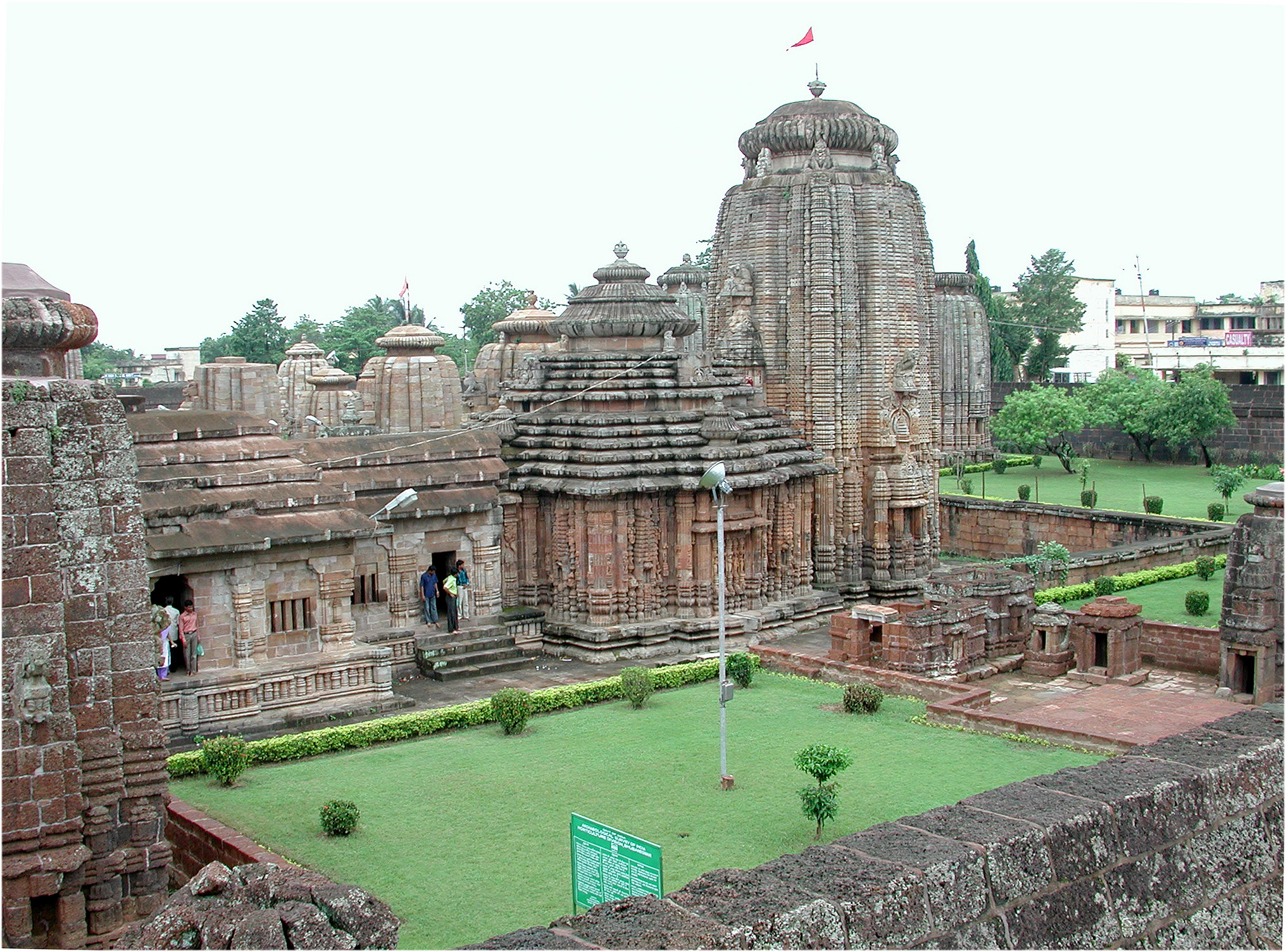

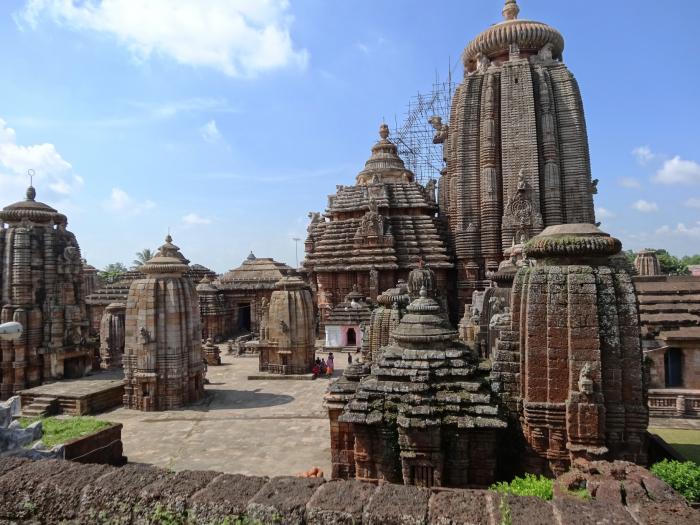
Museum of Man also known as the Tribal Research Institute, has collection of tribal dresses, weapons and jewellery representing more than 60 different tribal groups mostly concentrated in southern parts of Odisha. Prototypes of the traditional style huts with authentic murals decorating their walls attract a large number of visitors.

Pathani Samanta Planetarium is named after the illustrious astronomer of Odisha, the planetarium features programmes related to astronomy in a domed shaped air conditioned auditorium. The sprawling 4 acre complex has well manicured garden around it.
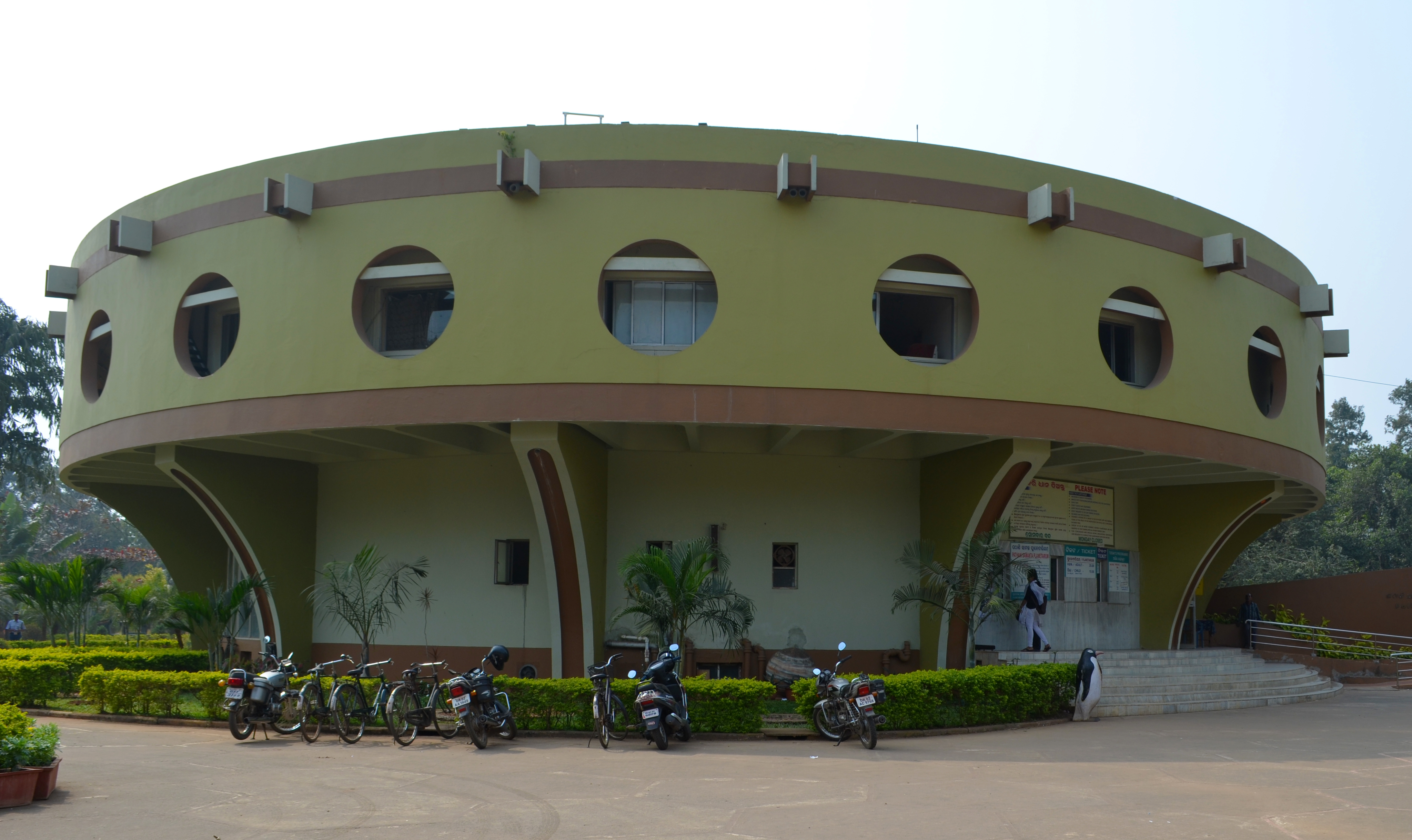


Odisha Modern Art Gallery is set with the sole objective to promote contemporary Orissan art, the Gallery at Surya Nagar has an array of work in oil and water, sculptures, serigraphy, etching, lithography, wood carvings showing myriad aspects of life.


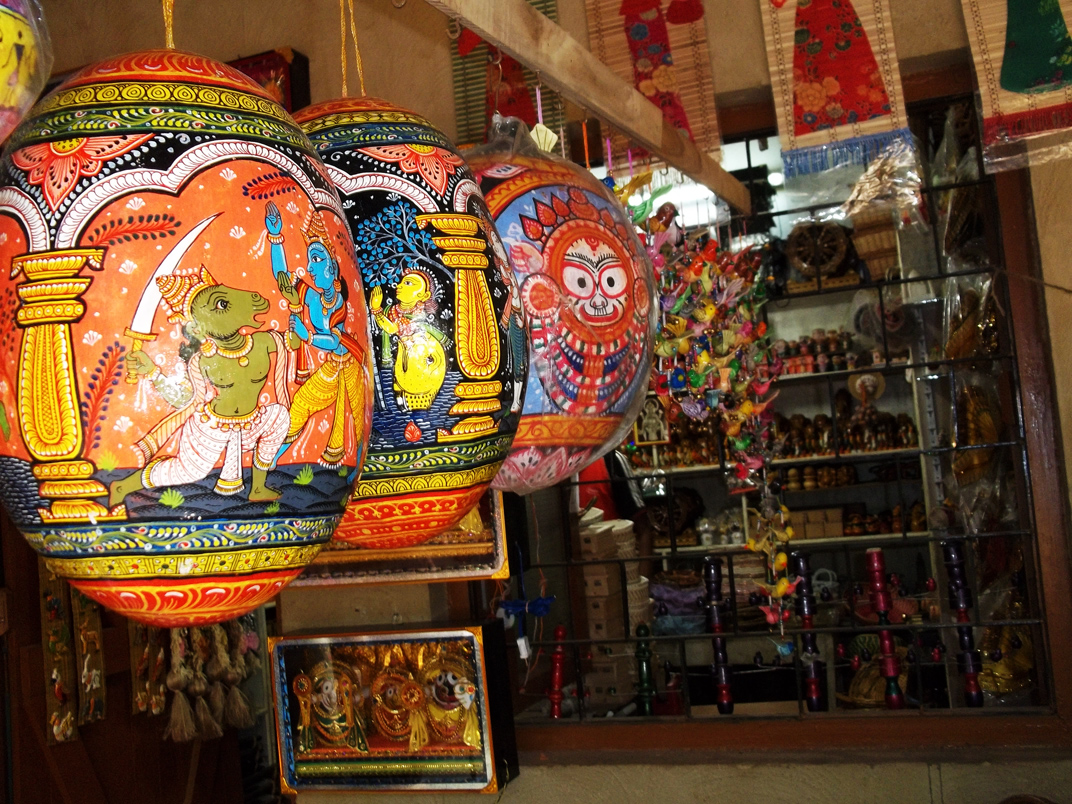

Regional Museum of Natural History consists of models and photography to create awareness about conservation of natural heritage and our rich biodiversity; Regional Science Centre has four halls consisting exhibits to popularise science and technology especially among school children.



Ananta – Vasudeva Temple,built in 13th century AD by Queen Chandrika of Eastern Ganga dynasty, is the second most popular religious destination in Bhubaneswar, Odisha. One of the few Vaishnavite temples in Bhubaneswar, this religious site enshrines the idols of Lord Jagannath, Balarama and Subhadra. Bindu Sagar Lake lies on the western side of the temple. The outer facade of the temple depicts the images of Varaha, the boar incarnation of Vishnu. The most significant feature of this temple is the images of the trio, which is complete unlike the statues of Puri Jagannath Temple.
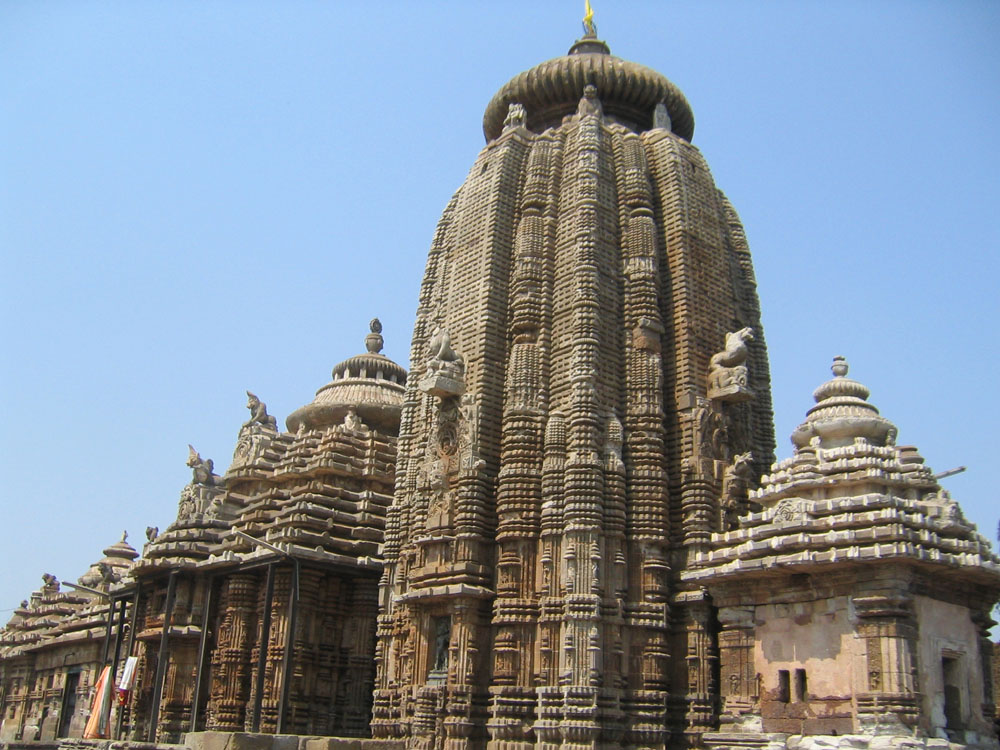


Bhaskareshwar Temple is a two storied Shiva shrine standing with abundance architectural opulence. Certainly distinctive from the other Shiva temples in Bhubaneswar, this Hindu religious attraction houses a 9 feet Shiva Linga inside. The temple style bears the reminiscence of a mutilated Buddhist Stupa. The upper chamber of the temple enshrines the Lingam and can be accessed by a flight of steps against the northern wall of the lower tier. Both the tiers of this temple are set on Panchatantra plan and depict five-fold divisions.


Brahmeshwar Temple, built at the end of 9th century AD, is considered among the most fascinating tourist attractions in Bhubaneswar. Dedicated to Lord Shiva, the temple is brought out in mature Orissan style and looks stunning with its minute detailing. The temple is classified as a panchayatana temple. In this type of temples you will find four subsidiary shrines in the four corners around the temple apart from the main shrine. The vimana of the temple reaches at a height of 18.96 m (62.2 ft). Though the temple is carved out of stone, the traditional method of wood carving is applied on it.

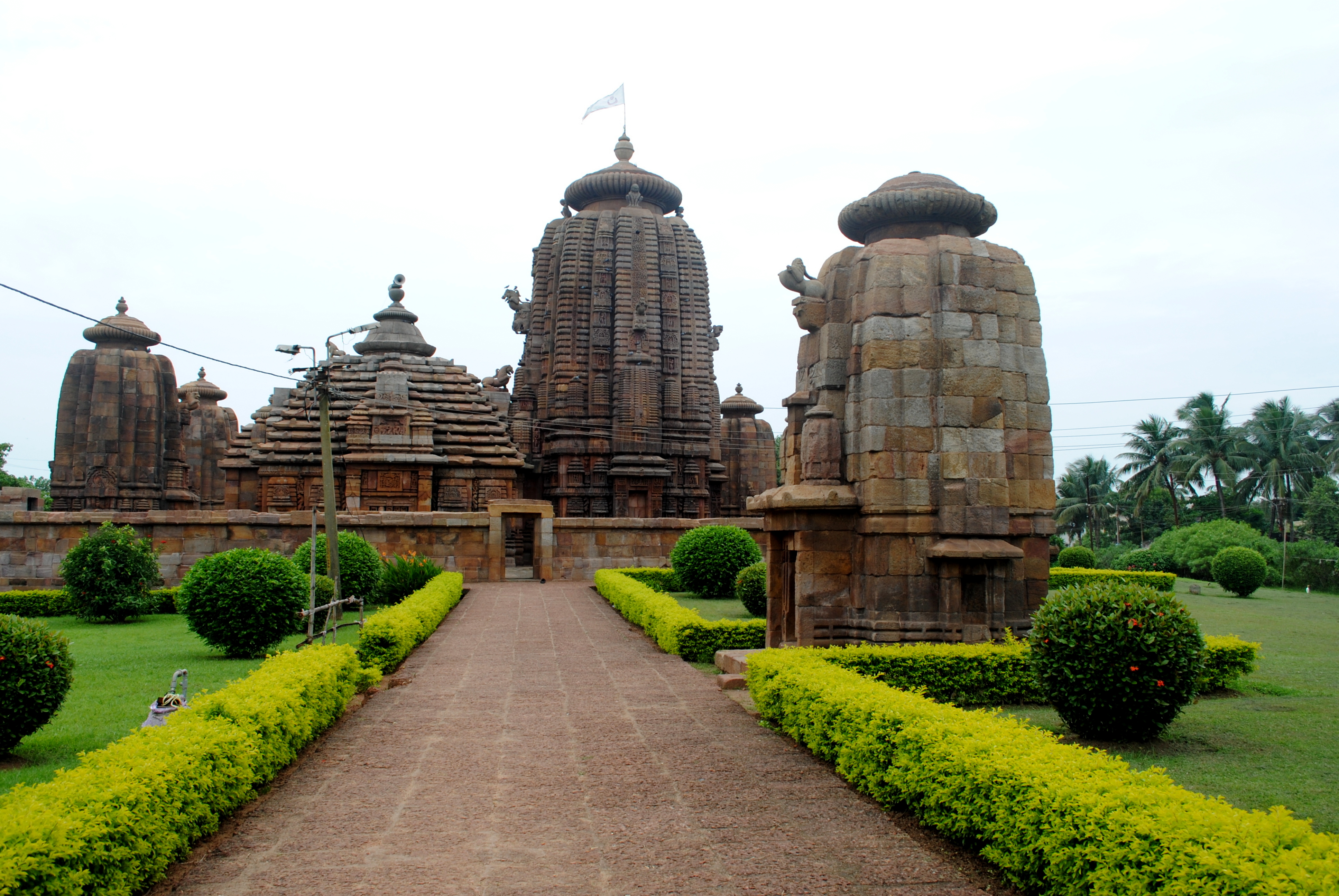

Dhauli, symbol of pure tranquillity, sheer natural beauty and above all peace over non-violence, is 8km south of today’s Bhubaneswar. Spread across the bank of lively river Daya, this peaceful travel destination is known to be the home of notorious battle of Kalinga. Known mainly for the pristine white Buddhist Stupa, Dhauli is dotted with rock edicts inscribed with the quotations of Buddha. History states that Ashoka engraved these messages of peace on a mass of rock. Vishwa Shanti Stupa or the Peace Pagoda, at the top of Dhauli Hill is the most attractive element in Dhauli.



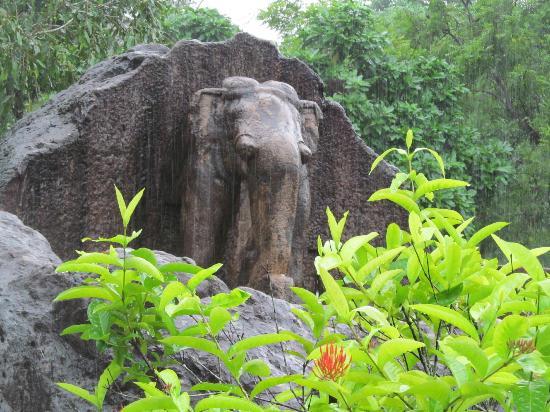

Pipli, a small vibrant village enveloped in different shades of colour, is around 15km south of Bhubaneswar. Located on the highway to Puri, it is an artists’ village and known mainly for the applique work. The craft originated in this village basically serves the needs of the temple works and mostly found in intricately stitched coloured canopies.
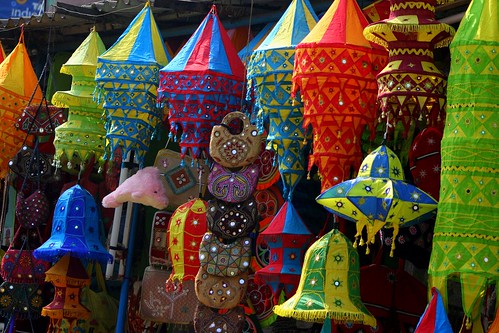
Udayagiri and Khandagiri Caves are a glorious element of Odisha tourism. Around 6 km east of Bhubaneswar, the twin caves rise abruptly from the coastal plain. Partly natural and partly artificial, these caves are comprised of small blocks which were once used by the mendicants for meditation. While Udayagiri has 18 caves, the Khandagiri has 15. The most significant of these caves group is Rani Gumpha in Udayagiri part of the cave and is a double-storeyed monastery. There are certain blocks in these caves where one can see Brahmi inscriptions.


_-_Oct_2010.jpg)
Nandankanan is a zoo and botanical garden. Surrounded by plush green forest, the zoo protects several exotic species of animals, birds, and especially the white tigers. Nandankanan is also famous in Odisha for breeding various endangered species. Nandankanan is situated on the bank of Kanjia Lake. The zoo has 54 cages and 47 open moated enclosures. There are around 634 mammals, 134 reptiles and 812 birds in Nandankanan.

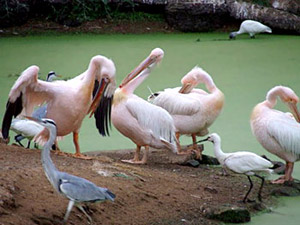
64 Yoginis Temple is a must see must explore tourist attractions in Bhubaneswar. Situated at Hirapur, this temple was built in 9-10th century AD and is dedicated to Yoginis, the attendant of the great Goddess. The temple gets immense importance among the followers of Tantra as it is one of the only four Yogini temples in the country dedicated to the esoteric cult of tantra. The temple wall is engraved with the images of 64 Yoginis along with the image of Mahamaya, the presiding deity. The temple does not have a roof, as it is believed that the Yoginis fly outside to roam around at night. During Basanti Puja and Dussehra Goddess Mahamaya and the accompanying Yoginis are worshipped in the form of Goddess Durga.


How to reach here:
By Air: Biju Patnaik airport at Bhubaneswar is nearly 5 km away from the heart of the city.
By Rail: Bhubaneswar railway station is about 6 km away from the city center. This railhead is well-connected to the metro cities.
Best time to visit: October to March
Languages spoken: Oriya, English, Hindi and Bengali.
Must eat: Pakhala, Dalma, Santula, Kanika.
Famous Restaurants: Golden Bird, Mayfair Lagoon, Teapot, Garam Masala, Hare Krishna.
Places you must visit:
Orissa State Museum is well known and famed to glory its huge collection of manuscripts on palm-leaves. A palm leaf manuscript of 12th century devotional poem Gita Govinda is available in this museum.It exhibits a rich and invaluable collection of archaeological objects, art and craft objects, natural history objects.The museum was established in 1948 and show cases many other items also, like bronze images, traditional and folk musical instruments, coins, copper plates, prehistoric objects, ethnological objects and armory.

_-_Oct_2010.jpg)
_-_Oct_2010.jpg)

Bindu-Sarovara also known as ocean drop tank is believed to have water from every holy water body in the whole of India. The tank is suitably surrounded by many temples.The famous Lingaraj Temple and Ananta Vasudeva temples are placed very close to Bindu Sagar. The ritual in the Lingaraja temple during the Ashokastami festival consists of taking the main deity of the Lingaraj temple to the lake for a ritual bath.


Lingaraj Temple is an 11th century construction commissioned by the King Jajati Keshari of Soma Vansh. The remarkable edifice resembles the Kalinga Architectural style and is built in red sandstone. The 55 m elevated spire of the temple dominates the contours of Lingaraj Temple. The temple complex comprises around 50 shrines of different sizes dedicated to prominent Hindu deities. To the surprise of the devotees, in Lingaraja Temple 22 services are offered in a day to the deity. The image of Lingaraja is taken out of the temple to the Jalmandir which is found at the heart of Bindu Sagar Lake.



Museum of Man also known as the Tribal Research Institute, has collection of tribal dresses, weapons and jewellery representing more than 60 different tribal groups mostly concentrated in southern parts of Odisha. Prototypes of the traditional style huts with authentic murals decorating their walls attract a large number of visitors.

Pathani Samanta Planetarium is named after the illustrious astronomer of Odisha, the planetarium features programmes related to astronomy in a domed shaped air conditioned auditorium. The sprawling 4 acre complex has well manicured garden around it.
Odisha Modern Art Gallery is set with the sole objective to promote contemporary Orissan art, the Gallery at Surya Nagar has an array of work in oil and water, sculptures, serigraphy, etching, lithography, wood carvings showing myriad aspects of life.


Ekamra Haat - A showcase of Odisha's art, craft, culture and cuisine, set amidst lush green environ, Ekamra Haat, on a 5 acre plot is managed by IDCO, on behalf of the State government. The architectural design and ambience of Haat matches the activities carried out there. The shops selling ethnic produce not only promote the traditional craft but provide a direct market access to the local artisans and weavers. The infrastructure and facilities also include an open-air theatre, lily pond with water fountain, food stalls, artisan rest rooms and info centre.


Regional Museum of Natural History consists of models and photography to create awareness about conservation of natural heritage and our rich biodiversity; Regional Science Centre has four halls consisting exhibits to popularise science and technology especially among school children.



Ananta – Vasudeva Temple,built in 13th century AD by Queen Chandrika of Eastern Ganga dynasty, is the second most popular religious destination in Bhubaneswar, Odisha. One of the few Vaishnavite temples in Bhubaneswar, this religious site enshrines the idols of Lord Jagannath, Balarama and Subhadra. Bindu Sagar Lake lies on the western side of the temple. The outer facade of the temple depicts the images of Varaha, the boar incarnation of Vishnu. The most significant feature of this temple is the images of the trio, which is complete unlike the statues of Puri Jagannath Temple.



Bhaskareshwar Temple is a two storied Shiva shrine standing with abundance architectural opulence. Certainly distinctive from the other Shiva temples in Bhubaneswar, this Hindu religious attraction houses a 9 feet Shiva Linga inside. The temple style bears the reminiscence of a mutilated Buddhist Stupa. The upper chamber of the temple enshrines the Lingam and can be accessed by a flight of steps against the northern wall of the lower tier. Both the tiers of this temple are set on Panchatantra plan and depict five-fold divisions.


Brahmeshwar Temple, built at the end of 9th century AD, is considered among the most fascinating tourist attractions in Bhubaneswar. Dedicated to Lord Shiva, the temple is brought out in mature Orissan style and looks stunning with its minute detailing. The temple is classified as a panchayatana temple. In this type of temples you will find four subsidiary shrines in the four corners around the temple apart from the main shrine. The vimana of the temple reaches at a height of 18.96 m (62.2 ft). Though the temple is carved out of stone, the traditional method of wood carving is applied on it.


Dhauli, symbol of pure tranquillity, sheer natural beauty and above all peace over non-violence, is 8km south of today’s Bhubaneswar. Spread across the bank of lively river Daya, this peaceful travel destination is known to be the home of notorious battle of Kalinga. Known mainly for the pristine white Buddhist Stupa, Dhauli is dotted with rock edicts inscribed with the quotations of Buddha. History states that Ashoka engraved these messages of peace on a mass of rock. Vishwa Shanti Stupa or the Peace Pagoda, at the top of Dhauli Hill is the most attractive element in Dhauli.





Pipli, a small vibrant village enveloped in different shades of colour, is around 15km south of Bhubaneswar. Located on the highway to Puri, it is an artists’ village and known mainly for the applique work. The craft originated in this village basically serves the needs of the temple works and mostly found in intricately stitched coloured canopies.

Udayagiri and Khandagiri Caves are a glorious element of Odisha tourism. Around 6 km east of Bhubaneswar, the twin caves rise abruptly from the coastal plain. Partly natural and partly artificial, these caves are comprised of small blocks which were once used by the mendicants for meditation. While Udayagiri has 18 caves, the Khandagiri has 15. The most significant of these caves group is Rani Gumpha in Udayagiri part of the cave and is a double-storeyed monastery. There are certain blocks in these caves where one can see Brahmi inscriptions.


_-_Oct_2010.jpg)
Nandankanan is a zoo and botanical garden. Surrounded by plush green forest, the zoo protects several exotic species of animals, birds, and especially the white tigers. Nandankanan is also famous in Odisha for breeding various endangered species. Nandankanan is situated on the bank of Kanjia Lake. The zoo has 54 cages and 47 open moated enclosures. There are around 634 mammals, 134 reptiles and 812 birds in Nandankanan.


64 Yoginis Temple is a must see must explore tourist attractions in Bhubaneswar. Situated at Hirapur, this temple was built in 9-10th century AD and is dedicated to Yoginis, the attendant of the great Goddess. The temple gets immense importance among the followers of Tantra as it is one of the only four Yogini temples in the country dedicated to the esoteric cult of tantra. The temple wall is engraved with the images of 64 Yoginis along with the image of Mahamaya, the presiding deity. The temple does not have a roof, as it is believed that the Yoginis fly outside to roam around at night. During Basanti Puja and Dussehra Goddess Mahamaya and the accompanying Yoginis are worshipped in the form of Goddess Durga.



